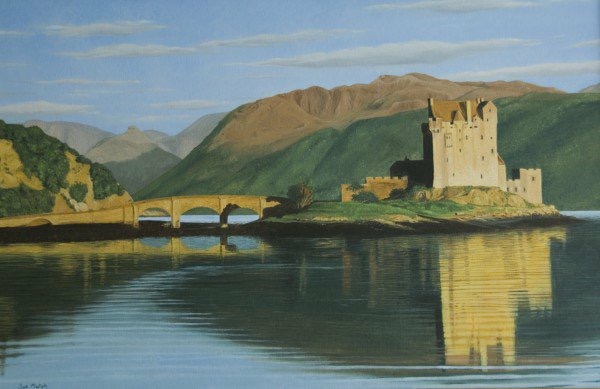
Art as a Form of Wellness
Across the UK, from wild moorlands to blooming flower beds, artists have long turned to nature as their greatest muse. There’s something timeless about the way trees sway in the wind, the way light dances through petals, or how water glimmers under a cloudy sky. Nature doesn’t just offer scenery—it tells stories, stirs memories, and grounds us in the present moment. It’s no surprise, then, that so many contemporary artists are drawn to its rhythm.
In the October 2024 issue of Creative Talents Magazine, this connection between nature and creativity is deeply explored. Take Rachel Hayes, for example. Based near the Derbyshire-Nottinghamshire border, Rachel creates bright, textured paintings inspired by her garden. But she doesn’t replicate what she sees—she transforms it. Her piece “Forever Summer” isn’t simply a floral image. It’s a visual memory, a feeling, a celebration of fleeting blooms and golden sunshine. Rachel starts each canvas with bold, intuitive marks and layers upon layers of colour. Her process is as organic as the garden that fuels it.

Similarly, Susan Tracey’s oil painting “Adagio” captures a quieter reflection. Painted during the UK lockdowns, it shows birch trees illuminated by shafts of light—an allegory for hope during dark times. As Susan puts it, her art is a meditation on landscape and time, a way to connect with the ancient and ever-changing beauty of the Peak District.
Traditions
There’s a long-standing tradition of drawing creative strength from the land. From the intricate botanical illustrations of the Victorian era to the raw plein air landscapes of the Impressionists, nature has consistently been both subject and collaborator. The Impressionist movement in the 19th century revolutionized how artists perceived and painted the world around them. Claude Monet’s series on water lilies and haystacks were not only studies of light and time but also meditations on nature’s patterns. Today’s artists carry this torch in their own way—through abstraction, digital media, and sensory exploration.
Physiological Benefits
In addition, modern science continues to validate the psychological and physiological benefits of connecting with nature. Studies in environmental psychology have shown that exposure to natural elements enhances creative thinking, reduces stress, and boosts problem-solving abilities. When artists embed themselves in these environments, it’s not just their art that flourishes—their well-being does too.
So why does nature inspire? Because it’s honest. It doesn’t hide its cycles of life, decay, and renewal. In an age of filters and facades, nature offers raw truth. And artists, ever the seekers of truth, respond with brush, lens, and soul.
The Question:
So why does nature inspire? Because it’s honest. It doesn’t hide its cycles of life, decay, and renewal. In an age of filters and facades, nature offers raw truth. And artists, ever the seekers of truth, respond with brush, lens, and soul.

Have Your Say
★★★★★
Feel free to leave your thoughts and comments about this subject as a comment here or on social media
We’d love to hear your story and see your work. Submit your creations for a chance to be featured in the next edition of Creative Talents Magazine.e, power, or purpose?

